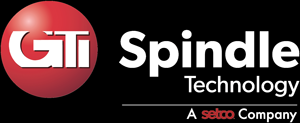Home » Spindle Parts & Accessories » Encoders and Proximity Switches
Few mechanical systems depend on a combination of speed, accuracy and repeatability more than the modern machine tool—especially in the age of multi-axis, CNC machinery and small-part, small-production runs. A metalworking operation is only as strong as its weakest link; one scrapped part not only inflicts added material costs, but also often affects the productivity and schedule of every process downstream from it.
On CNC machine tools, proximity switches are used to tell the PLC/computer where the tool is at a given point. CNC machines execute a series of instructions and proximity switches to locate the tool. Proximity switches perform a deceptively simple function, but that simplicity makes them incredibly versatile, useful and critical components to machine tool spindles.
More than maybe any other instrument in a machine tool, encoders ensure the proper combination of speed, accuracy and repeatability by providing positional feedback to the control. In other words, they encode position or movement in a language CNC controls and, in turn, operators can understand.
As a historical leader and innovator of motion control systems and CNC controls, GTI is uniquely positioned to provide solutions to machine builders and upgrades or retrofit options to end users that optimize metalworking performance.
© 2024, GTI Spindle Technology. All rights reserved. Site Map | Privacy Policy | Terms of Use

Follow US:
GTI Spindle Technology, Inc.
33 Zachary Road
Manchester, NH 03109-5639
Call: 603.669.5993
Toll Free: 888.473.9675
Fax: 603.669.8996